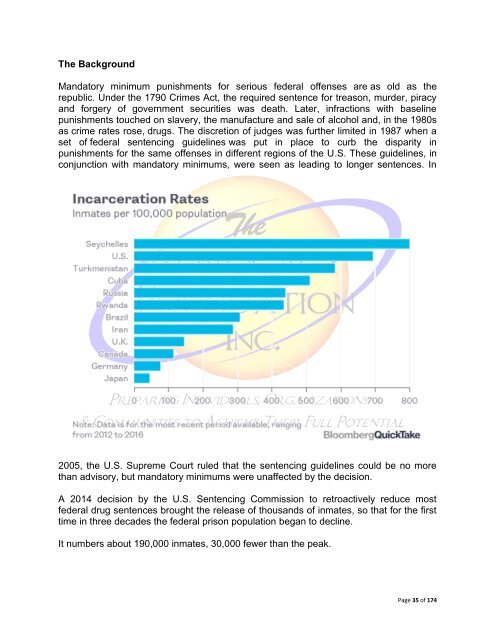The Cost Ineffectiveness of Mandatory Minimum Sentencing In The U.S.
The Cost Ineffectiveness of Mandatory Minimum Sentencing In The U.S.
The Cost Ineffectiveness of Mandatory Minimum Sentencing In The U.S.
- No tags were found...
Create successful ePaper yourself
Turn your PDF publications into a flip-book with our unique Google optimized e-Paper software.
<strong>The</strong> Background<br />
<strong>Mandatory</strong> minimum punishments for serious federal <strong>of</strong>fenses are as old as the<br />
republic. Under the 1790 Crimes Act, the required sentence for treason, murder, piracy<br />
and forgery <strong>of</strong> government securities was death. Later, infractions with baseline<br />
punishments touched on slavery, the manufacture and sale <strong>of</strong> alcohol and, in the 1980s<br />
as crime rates rose, drugs. <strong>The</strong> discretion <strong>of</strong> judges was further limited in 1987 when a<br />
set <strong>of</strong> federal sentencing guidelines was put in place to curb the disparity in<br />
punishments for the same <strong>of</strong>fenses in different regions <strong>of</strong> the U.S. <strong>The</strong>se guidelines, in<br />
conjunction with mandatory minimums, were seen as leading to longer sentences. <strong>In</strong><br />
2005, the U.S. Supreme Court ruled that the sentencing guidelines could be no more<br />
than advisory, but mandatory minimums were unaffected by the decision.<br />
A 2014 decision by the U.S. <strong>Sentencing</strong> Commission to retroactively reduce most<br />
federal drug sentences brought the release <strong>of</strong> thousands <strong>of</strong> inmates, so that for the first<br />
time in three decades the federal prison population began to decline.<br />
It numbers about 190,000 inmates, 30,000 fewer than the peak.<br />
Page 35 <strong>of</strong> 174
















